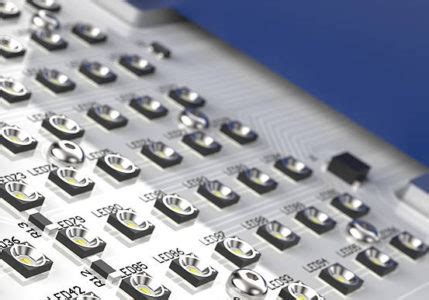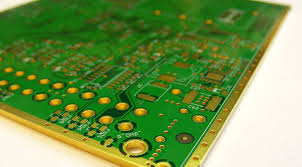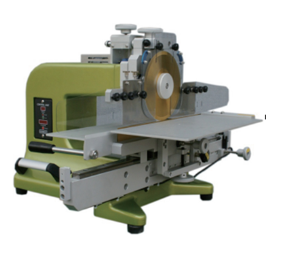Aluminium metal core pcb
Advantages Of Aluminium Metal Core PCBs In Thermal Management
Aluminium metal core printed circuit boards (PCBs) have emerged as a pivotal innovation in the realm of electronic design, particularly in applications where efficient thermal management is crucial. As electronic devices become increasingly compact and powerful, the need for effective heat dissipation solutions has never been more critical. Aluminium metal core PCBs offer a compelling solution to this challenge, providing a range of advantages that make them an ideal choice for thermal management in various applications.
One of the primary advantages of aluminium metal core PCBs is their superior thermal conductivity.
Unlike traditional PCBs, which are typically made from materials such as fiberglass, aluminium core PCBs incorporate a metal substrate that significantly enhances their ability to conduct heat. This characteristic is particularly beneficial in high-power applications, where excessive heat generation can lead to performance degradation or even failure of electronic components. By efficiently transferring heat away from critical components, aluminium metal core PCBs help maintain optimal operating temperatures, thereby enhancing the reliability and longevity of electronic devices.
In addition to their excellent thermal conductivity, aluminium metal core PCBs also offer improved mechanical stability.
The metal core provides a robust foundation that reduces the risk of warping or deformation, which can occur in conventional PCBs due to thermal expansion and contraction. This stability is especially important in applications that experience frequent temperature fluctuations or are subject to mechanical stress. By maintaining structural integrity under such conditions, aluminium metal core PCBs ensure consistent performance and reduce the likelihood of mechanical failure.
Moreover, the use of aluminium as a core material offers significant advantages in terms of weight and cost.
Aluminium is a lightweight metal, which contributes to the overall reduction in the weight of electronic devices. This is particularly advantageous in applications such as automotive and aerospace industries, where weight savings are critical for efficiency and performance. Furthermore, aluminium is a cost-effective material, making aluminium metal core PCBs an economical choice for manufacturers seeking to balance performance with budgetary constraints.
Another noteworthy benefit of aluminium metal core PCBs is their ability to support high-density circuit designs.
As electronic devices continue to evolve, there is a growing demand for compact and densely packed circuits. The thermal management capabilities of aluminium metal core PCBs allow for closer placement of components without the risk of overheating, enabling designers to create more complex and powerful electronic systems within a limited space. This capability is particularly valuable in the development of modern consumer electronics, where space is at a premium.
In conclusion, aluminium metal core PCBs offer a multitude of advantages in thermal management, making them an indispensable component in the design of high-performance electronic devices. Their superior thermal conductivity, mechanical stability, lightweight nature, cost-effectiveness, and support for high-density circuit designs collectively contribute to their growing popularity across various industries. As the demand for efficient and reliable electronic systems continues to rise, the role of aluminium metal core PCBs in ensuring optimal thermal management will undoubtedly become even more significant, driving further innovation and advancement in electronic design.
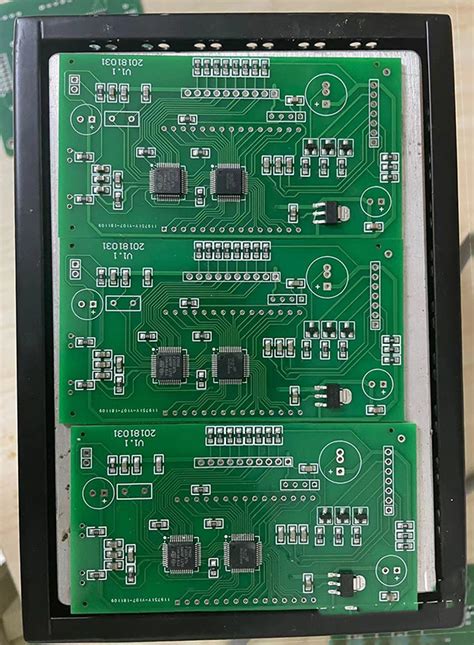
Applications Of Aluminium Metal Core PCBs In LED Lighting
Aluminium metal core printed circuit boards (PCBs) have emerged as a pivotal component in the realm of LED lighting, offering a range of benefits that enhance the performance and longevity of these lighting systems. As the demand for energy-efficient and durable lighting solutions continues to rise, the application of aluminium metal core PCBs in LED lighting has become increasingly significant. This article explores the various applications of aluminium metal core PCBs in LED lighting, highlighting their advantages and the reasons behind their growing popularity.
To begin with, one of the primary applications of aluminium metal core PCBs in LED lighting is in high-power LED systems.
These systems generate a substantial amount of heat, which, if not managed effectively, can lead to reduced performance and a shorter lifespan of the LEDs. Aluminium metal core PCBs are designed to address this issue by providing excellent thermal conductivity. The aluminium core acts as a heat sink, efficiently dissipating heat away from the LED components. This thermal management capability ensures that the LEDs operate at optimal temperatures, thereby enhancing their performance and extending their operational life.
Moreover, aluminium metal core PCBs are widely used in LED street lighting.
Street lights are exposed to various environmental conditions and need to be robust and reliable. The durability of aluminium metal core PCBs makes them an ideal choice for such applications. They offer superior mechanical strength and can withstand harsh environmental factors such as temperature fluctuations and moisture. This resilience ensures that LED street lights remain functional and efficient over extended periods, reducing maintenance costs and improving public safety.
In addition to street lighting, aluminium metal core PCBs find applications in automotive LED lighting systems.
The automotive industry demands components that can endure extreme conditions, including vibrations, temperature variations, and exposure to chemicals. Aluminium metal core PCBs meet these requirements by providing a stable and reliable platform for automotive LED lights. Their ability to manage heat effectively is particularly crucial in automotive applications, where space is limited, and efficient heat dissipation is essential to prevent overheating and ensure consistent performance.
Furthermore, aluminium metal core PCBs are utilized in LED lighting for consumer electronics, such as televisions and computer monitors.
These devices require high-quality lighting solutions that offer excellent brightness and color accuracy. The thermal management properties of aluminium metal core PCBs contribute to the consistent performance of LEDs in these applications, ensuring that the display quality remains high over time. Additionally, the compact design of aluminium metal core PCBs allows for the development of slimmer and more aesthetically pleasing electronic devices.
In conclusion, the applications of aluminium metal core PCBs in LED lighting are diverse and impactful.
Their ability to provide efficient thermal management, mechanical strength, and reliability makes them an indispensable component in various LED lighting systems. From high-power LED systems and street lighting to automotive applications and consumer electronics, aluminium metal core PCBs play a crucial role in enhancing the performance and longevity of LED lights. As the demand for energy-efficient and durable lighting solutions continues to grow, the significance of aluminium metal core PCBs in LED lighting is expected to increase, driving further innovation and development in this field.
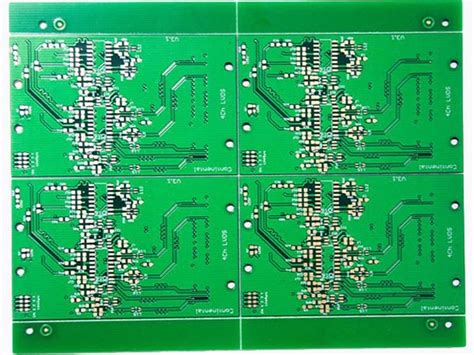
Design Considerations For Aluminium Metal Core PCBs
When designing aluminium metal core printed circuit boards (PCBs), several critical considerations must be taken into account to ensure optimal performance and reliability. Aluminium metal core PCBs are renowned for their superior thermal management capabilities, making them ideal for applications where heat dissipation is crucial. As such, understanding the unique properties and design requirements of these PCBs is essential for engineers and designers.
To begin with, the choice of materials plays a pivotal role in the design of aluminium metal core PCBs.
The core material, typically aluminium, is selected for its excellent thermal conductivity, which facilitates efficient heat transfer away from heat-generating components. This characteristic is particularly beneficial in high-power applications such as LED lighting, power converters, and automotive electronics. However, the selection of the dielectric layer, which insulates the conductive layers from the metal core, is equally important. The dielectric material must possess a low thermal resistance to maintain the overall thermal performance of the PCB.
In addition to material selection, the thickness of the aluminium core is a crucial factor to consider.
The core thickness directly influences the PCB’s ability to dissipate heat. A thicker core can handle higher thermal loads, but it may also increase the overall weight and cost of the PCB. Therefore, designers must strike a balance between thermal performance and other design constraints such as weight and budget. Furthermore, the thickness of the dielectric layer should be optimized to ensure adequate insulation while minimizing thermal resistance.
Another important consideration is the layout of the PCB.
The placement of components and the routing of traces must be carefully planned to maximize thermal efficiency. Components that generate significant heat should be strategically positioned to facilitate heat dissipation through the aluminium core. Additionally, the use of thermal vias can enhance heat transfer from the surface of the PCB to the metal core, further improving thermal management. These vias act as conduits for heat, allowing it to be efficiently conducted away from critical components.
Moreover, the choice of surface finish can impact the performance and reliability of aluminium metal core PCBs.
Surface finishes such as HASL (Hot Air Solder Leveling), ENIG (Electroless Nickel Immersion Gold), and OSP (Organic Solderability Preservative) each offer distinct advantages and limitations. The selection of an appropriate surface finish should consider factors such as solderability, corrosion resistance, and cost. For instance, ENIG provides excellent surface planarity and corrosion resistance, making it suitable for applications requiring high reliability.
Finally, thermal simulation and testing are indispensable in the design process of aluminium metal core PCBs.
Advanced simulation tools can model the thermal behavior of the PCB under various operating conditions, allowing designers to identify potential hotspots and optimize the design accordingly. Once the design is finalized, prototype testing is essential to validate the thermal performance and ensure that the PCB meets the required specifications.
In conclusion, designing aluminium metal core PCBs involves a comprehensive understanding of material properties, thermal management techniques, and layout strategies. By carefully considering these factors, designers can create PCBs that not only meet the thermal demands of high-power applications but also deliver reliable performance over their operational lifespan. As technology continues to advance, the demand for efficient thermal management solutions will only grow, underscoring the importance of well-designed aluminium metal core PCBs in modern electronics.
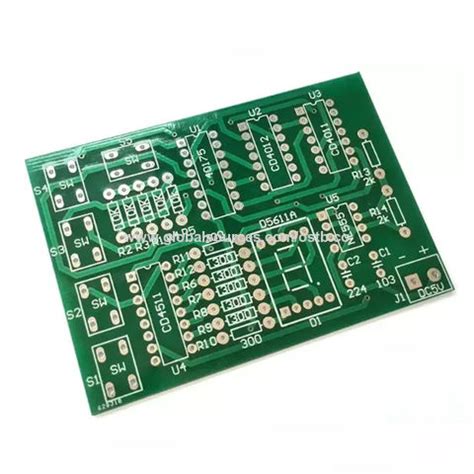
Comparing Aluminium Metal Core PCBs With Other Metal Core Options
Aluminium metal core printed circuit boards (PCBs) have become increasingly popular in various industries due to their unique properties and advantages over other metal core options. When comparing aluminium metal core PCBs with other metal core alternatives, it is essential to consider factors such as thermal conductivity, cost-effectiveness, weight, and application suitability. By examining these aspects, one can better understand why aluminium is often the preferred choice for many applications.
To begin with, thermal conductivity is a critical factor in the performance of metal core PCBs.
Aluminium metal core PCBs are renowned for their excellent thermal conductivity, which allows for efficient heat dissipation. This property is particularly beneficial in applications where high power and heat generation are prevalent, such as in LED lighting and power electronics. In comparison, other metal core options like copper offer even higher thermal conductivity. However, the cost of copper is significantly higher, making aluminium a more cost-effective solution for many applications that require a balance between performance and budget.
Moreover, the cost-effectiveness of aluminium metal core PCBs extends beyond just the material cost.
Aluminium is more abundant and easier to process than other metals like copper, which translates to lower manufacturing costs. This affordability makes aluminium metal core PCBs an attractive option for industries that require large-scale production without compromising on quality. Additionally, the lightweight nature of aluminium contributes to its cost-effectiveness. In applications where weight is a critical consideration, such as in the automotive and aerospace industries, aluminium’s lower density compared to other metals like copper or steel provides a significant advantage. This reduction in weight can lead to improved fuel efficiency and reduced transportation costs.
Furthermore, the versatility of aluminium metal core PCBs is another factor that sets them apart from other metal core options.
Aluminium’s unique combination of properties makes it suitable for a wide range of applications, from consumer electronics to industrial machinery. While other metals like copper may offer superior thermal performance, they may not be as versatile or cost-effective for certain applications. For instance, in consumer electronics, where both performance and cost are crucial, aluminium metal core PCBs provide an optimal solution that meets these requirements.
In addition to these advantages, aluminium metal core PCBs also offer excellent mechanical properties.
They are known for their durability and resistance to mechanical stress, which is essential in applications where the PCB may be subjected to harsh environmental conditions or physical impact. This robustness ensures a longer lifespan and reliability, further enhancing the appeal of aluminium as a metal core option.
In conclusion, when comparing aluminium metal core PCBs with other metal core options, it becomes evident that aluminium offers a unique combination of thermal conductivity, cost-effectiveness, lightweight properties, and versatility. While other metals like copper may provide superior thermal performance, the higher cost and weight often make them less suitable for many applications. Aluminium’s balance of performance and affordability makes it an ideal choice for a wide range of industries, from consumer electronics to automotive and aerospace. As technology continues to advance and the demand for efficient, reliable, and cost-effective solutions grows, aluminium metal core PCBs are likely to remain a popular choice for many applications.


